Traveling to any foreign destination you’ve never been to before, whether it is for personal or business reasons, it’s a good idea to have at least a basic understanding of the history of that destination. When heading to Mombasa, Kenya, for example, the more you know about its history the more you can take advantage of some of the amazing opportunities to see that history up close.
Here is a brief history of Mombasa that can open up pathways you might not have even considered looking for.
Vasco De Gama first landed in the area known as Mombasa in 1498. His goal at the time was to expose the indigenous people there to Christian faith and expand Portugal’s trade routes. The natives here did not agree to this and fought back all of Portugal’s attempts until the later part of the 16th century when the Portuguese government became friendlier with Mombasa king.
As Portugal ruled over Kenya for more than 200 years, Mombasa became its most important port. It actually became the most important African port and it wasn’t until 1963 in Kenya was finally able to declare its independence and become a sovereign nation. Throughout its history, there have been many different influences from Christianity, Islam, Indian, and much more.
Within the architecture there is a distinct European influence, especially when you travel inland, closer to the interior portion of Kenya. Today, a large number of Kenyan tribes are represented along the coastline. The Swahili are a people whose origins stem from Africa, Arab sailors, and other travelers who found this place to be an incredible destination.
Overall, Mombasa and all of Kenya is a cultural wonderland. When you begin walking around Old Town, when you visit Fort Jesus, and if you take some time to interact with the locals you will discover the amazing history that makes up this unique city that is also a tropical paradise.
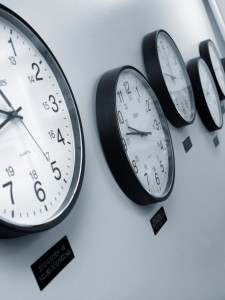 If you’re traveling to Mombasa, Kenya from a long distance away, such as from North or South America, you may experience some jet lag. Jet lag is a phenomena that occurs when people travel several time zones away from their home.
If you’re traveling to Mombasa, Kenya from a long distance away, such as from North or South America, you may experience some jet lag. Jet lag is a phenomena that occurs when people travel several time zones away from their home.
If you’re traveling across at least seven time zones to get to Mombasa, you will likely experience at least some level of jet lag. That means while it may be 4 o’clock in the afternoon when you arrive in Mombasa, your body will be thinking it is 9 o’clock in the morning, your time.
If you aren’t able to sleep on the plane, jet lag is really going to make it difficult for you to adjust for that first day. Here’s what you should consider doing when getting ready for your trip to Mombasa.
Change your sleep pattern.
At least two days before you’re set to leave for your trip to Mombasa, change your sleep pattern. Begin shifting it by a couple of hours each night and you will get closer to the nighttime hours in Mombasa.
When you arrive, stay up.
No matter how tired you may be when you get to Mombasa, it’s a good idea to stay awake. That would mean heading out to Old Town, Fort Jesus, or one of the wildlife sanctuaries that will keep you mentally stimulated, making it easier for you to stay awake.
Get to bed at your normal sleep time.
This doesn’t mean your normal time back in your home town, but if you generally go to bed around 10 o’clock in the evening at home, when it’s 10 o’clock Mombasa time, go to sleep. Even if you’re not tired because your body thinks it’s still 3 o’clock in the afternoon, close the curtains, make everything dark, turn off the TV, and lay in bed. Eventually you will get tired and fall asleep.
Make sure you set the alarm to wake up at your usual time in the morning as well.
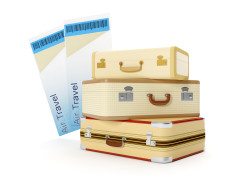 When you’re heading to Mombasa for vacation, you want to make sure you pack everything you’re going to need. There may be some things that you overlook at the time and then regret once you’re in Mombasa. While you can certainly pick up most items you’ll need when you’re here, it could cost quite a bit more than if you had brought along what you wanted from the beginning.
When you’re heading to Mombasa for vacation, you want to make sure you pack everything you’re going to need. There may be some things that you overlook at the time and then regret once you’re in Mombasa. While you can certainly pick up most items you’ll need when you’re here, it could cost quite a bit more than if you had brought along what you wanted from the beginning.
It’s a good idea to pack as light as possible, meaning avoiding stuffing your suitcase full of every possible clothing item you might need. If you going for a week, for example, don’t pack enough clothes for a month.
You should bring along at least two swimsuits, one that you can wear and put on when it’s dry and another that can be drying while you’re enjoying the pool or spending time at the Indian Ocean.
Bring along one pair of comfortable walking shoes, water shoes, and sandals or flip-flops. Anything else is extraneous. You don’t need to bring along six or eight or 10 pairs of shoes for every single outfit you have.
You’re going to be spending most of your time in a swimsuit, but you may want a nice dress or dress clothes for an evening out at dinner. You should also bring along one or two pairs of comfortable shorts and three or four comfortable shirts. Keep in mind that most hotels in Mombasa do have laundry facilities on site so you can wash something if you go through clothes to quickly.
Don’t forget your sunscreen. Being right along the equator means the sun is extremely intense and you can burn quite quickly. You should also consider a large brimmed hat to protect your face, eyes, and ears.
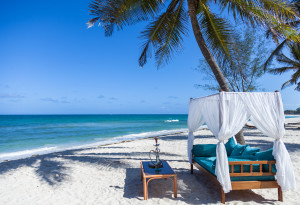 When you’re heading out to Mombasa, Kenya for a vacation or even a business trip, you’re going to want to spend at least some time along the incredible beaches of this tropical paradise. The beaches along the north and south coast of Mombasa are both ideal for vacation getaways where you can snorkel, swim, sunbathe, and even go scuba diving.
When you’re heading out to Mombasa, Kenya for a vacation or even a business trip, you’re going to want to spend at least some time along the incredible beaches of this tropical paradise. The beaches along the north and south coast of Mombasa are both ideal for vacation getaways where you can snorkel, swim, sunbathe, and even go scuba diving.
It can be difficult at times to try and decide between the North and South Coast beaches in Mombasa, but it doesn’t have to actually be so complicated. The hotel you choose to stay at in Mombasa will have a significant impact on which type of beaches you choose in this great city. For example, if you choose a hotel that is closer to the north beaches, those are the ones you’re going to probably spend most of your time it. The same is true if you choose them hotel along the South Coast beaches.
On the south coast of Mombasa, these beaches are lined with gorgeous palm trees and have incredible white sand beaches. One of the most popular beaches throughout the southern coastline is Diani beach.
The South Coast beaches are more commonly frequented by tourists, so you will see a lot of other people just like yourself visiting Mombasa, possibly for the first time. If you’re looking for a destination that has more locals, the North Coast beaches are probably your better option.
Keep in mind, though, that more world-class resorts will be situated along the South Coast beaches because of the tourist connection. Remember, even if you choose to stay close to the South Coast beaches in Mombasa on your vacation, you can still certainly visit some of the amazing and gorgeous North Coast beaches in this wonderful city.
It’s always a good idea to choose a hotel that is going to be comfortable for you and offer the amenities that become most important to you and the rest of your family, friends, or colleagues on your trip.
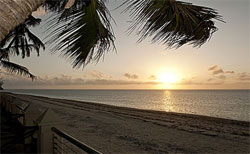 Both the North and South Coast beaches of Mombasa are beautiful and perfect for holidays. Here, we will focus on the South Coast destinations.
Both the North and South Coast beaches of Mombasa are beautiful and perfect for holidays. Here, we will focus on the South Coast destinations.
The coastline south of Mombasa is a tropical paradise of palm tree lined white sand beaches, where the gorgeous blue waters of the Indian Ocean join large coral reefs. The reefs have protected the coastline and created ideal beaches with calm, inviting waters.
Most days are sunny and the nights are warm. Gentle sea breezes sweep the beaches day and night. The offshore reefs are alive with coral, myriad fish, sea turtles, and dolphins. Both outer and inner reef walls offer world class diving with spectacular coral gardens and drop offs. The beaches are surrounded by vibrant green coastal rainforests with a huge variety of bird and wildlife including baboons, monkeys, and even some large cats.
World-class resorts provide a wonderful choice of places to stay around Diani beach. This is the more heavily touristy part of the South Coast. Visitors can relax and enjoy the natural beauty of Mombasa beaches with the best standards of accommodation, service, and cuisine. The south coast also has many smaller quiet getaways such as Tiwi Beach, ideal for travelers looking for a more low-key holiday.
Traveling inland you will find the Kwale District, which is a group of small tribal villages. The Wakamba, Digo, and Duruma tribes inhabit this area. Further south, the small fishing village of Shimoni is home to a series of deep, mysterious coastal caves that stretch from the sea to deep into the jungles. Historically, these caves were long used as a refuge for Dhow Sailors, Arab slavers, and explorers.
On the south coast, there are many choice dhow trips for snorkeling, diving, and dolphin spotting in the Wasini channel, which include stopping off at an island for a Swahili lunch. Alternatively, bird-lovers can opt for a motorboat trip to the mangrove channels to catch sightings of grey herons, fish eagles, cormorants, and kingfishers.
Whether you’re looking for sport like hunting and fishing or simply want to relax, the South Coast of Mombasa has everything you could hope for. There is culture, activity, beauty, and wildlife – the perfect holiday destination.
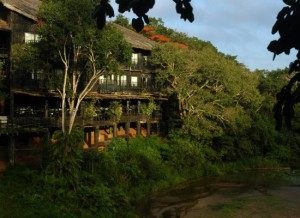 For a relaxing holiday you’ll find the Kenyan Coast is preferable to Nairobi. Mombasa is a perfect place for tropical relaxation. It offers world-class beaches and resorts.
For a relaxing holiday you’ll find the Kenyan Coast is preferable to Nairobi. Mombasa is a perfect place for tropical relaxation. It offers world-class beaches and resorts.
Holidays to coastal Kenya have something for everyone. Families, divers, culture seekers will all feel welcome and have endless activities to choose from. Holidays to Kenya are a great option for those who want something more exotic without the expensive price tag.
Why choose Kenya?
Kenyan holidays used to be reserved for the wealthy and famous. It was expensive to get there as flights were only offered by select carriers. That has recently changed and opened Kenya up to travelers of all ages and backgrounds. The city of Mombasa is home to three major holiday resorts; Diani beach to the South of the city and Nyali and Bamburi Beach to the North. The Shimba Hills National Park, Mijikenda County, and Mazeras are all close enough for a day trip.
You can also opt to visit Watamu as part of your stay in Kenya. It is smaller than Mombasa and offers only a few resorts, but it is very close to the Marine National Park, which is a diver’s paradise. There are also things to do nearby and excursions to see whales and dolphins. Watamu is a nice play to stay for a couple of days while holidaying in Mombasa.
The climate differs greatly across Kenya due to the increase in altitude across the country. Nairobi is about 1,600 meters above sea level and has a moderate climate, which can become chilly at night. Coastal areas like Mombasa are warmer and more even in temperature throughout the year.
Holidays to Kenya can be taken all year round and prices don’t tend to differ much between high and low season. Deciding when to travel will largely depend on what you plan to do. For instance, if you’re interested in snorkeling and scuba, October through January is the best time to visit; if you’re more interested in wildlife and hunting, go during the dry summer season.
Typical direct flight times from London to Mombasa take about nine hours. From Atlanta it is about twenty-four hours (there are no direct flights). It is only about an hour’s flight from Nairobi. The time zone in Kenya is +3 GMT and they do not participate in daylight savings.
When traveling internationally it is always best to talk with your doctor beforehand, especially when traveling with children. Any medications needed should be stocked up on before you depart. Kenyans are very welcoming to children and it is a wonderful place to take a family holiday. If you plan to take a Safari it is worth bearing in mind that many tours will not take children younger than seven. Check with your travel agent before planning your itinerary.

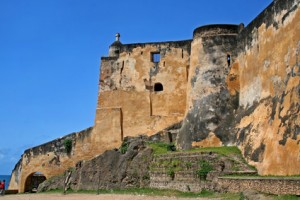

 KES 14,350 PPS
KES 14,350 PPS

 KES 12,600 PPS
KES 12,600 PPS 



